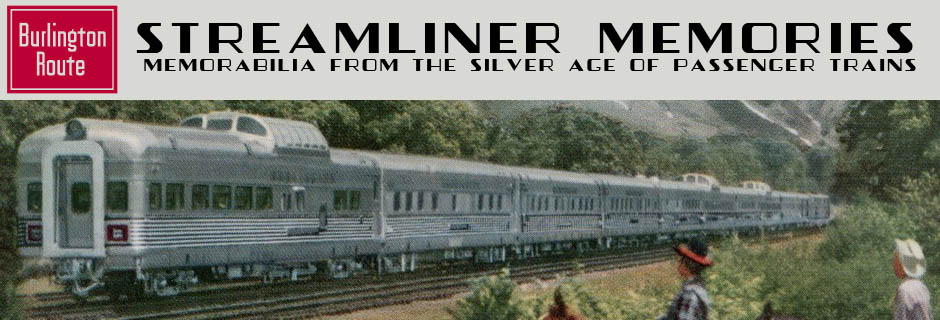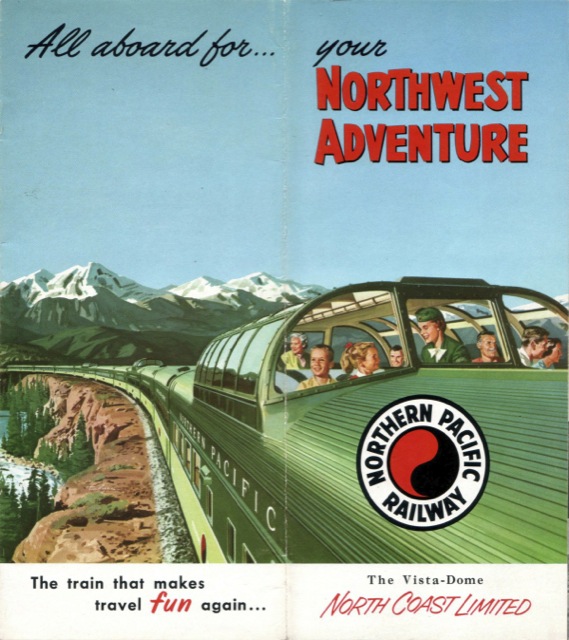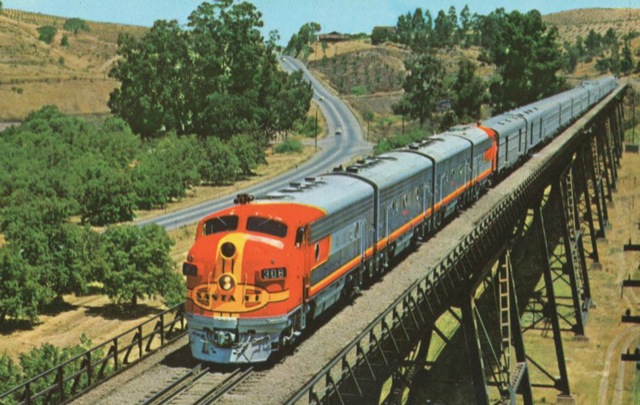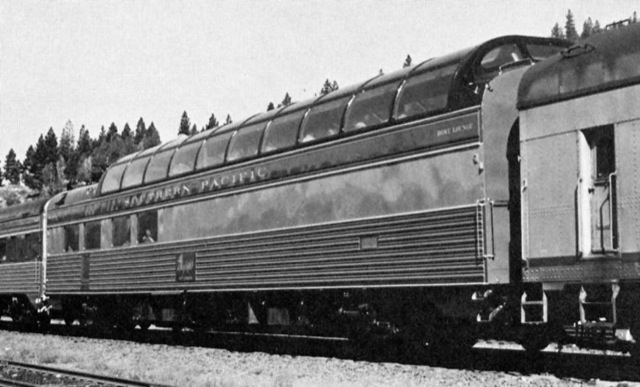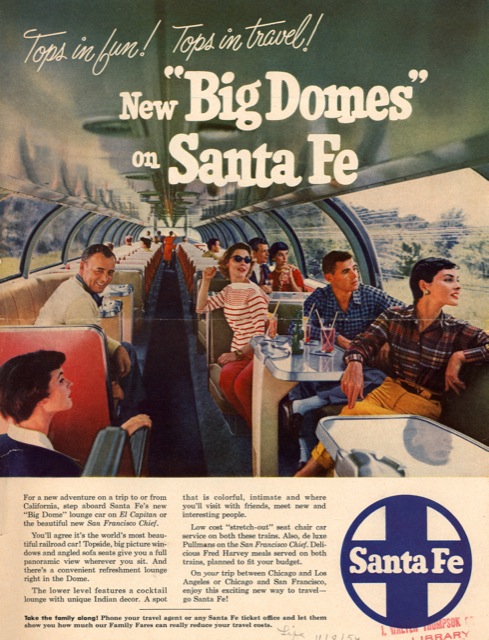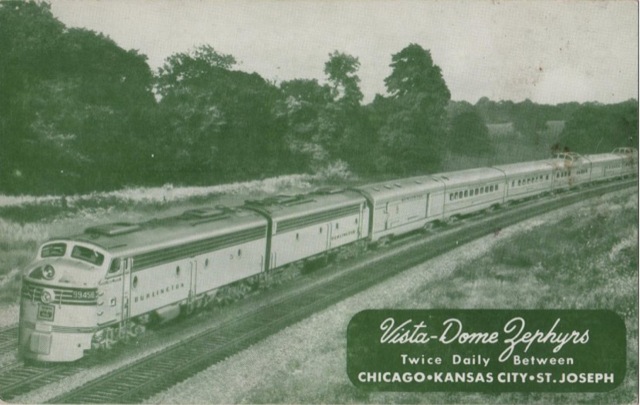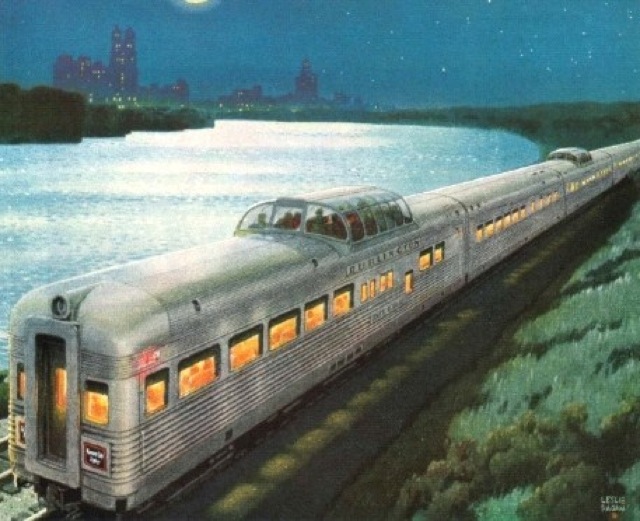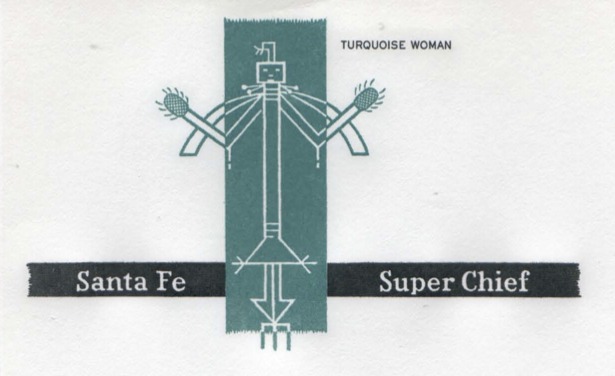One of my earlier posts criticized the 1948 North Coast Limited for having a drab and inadequate lounge car. That finally changed in June, 1955 when the NP converted its coach-buffet-lounge cars into the Traveller’s Rest cars, an homage to the 150th anniversary of the Lewis & Clark Expedition.
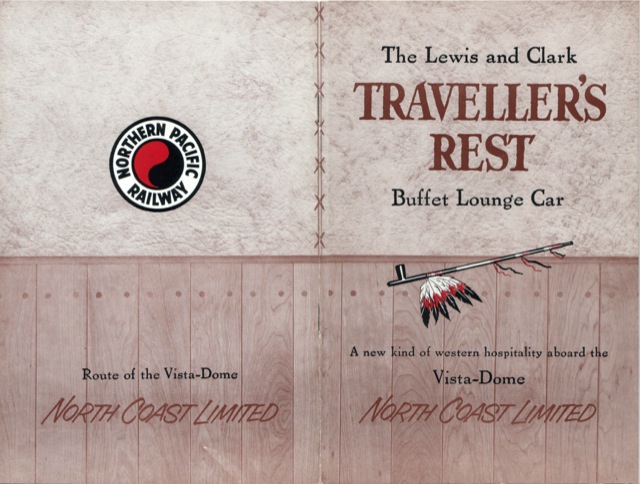
Click to download an 8.2-MB PDF of this 12-page brochure about the Lewis & Clark Traveller’s Rest car.
Raymond Loewy designed the basic concept and the cars were rebuilt in NP’s own shops at a cost of about $95,000 each (about $800,000 in today’s dollars). An innovative lunch counter at one end of the car had two tables for four and one for six people each easily served by a single waiter from a kitchen in the middle of the car. The other end of the car had a 30-seat lounge served by a small bar adjacent to the kitchen. Continue reading
